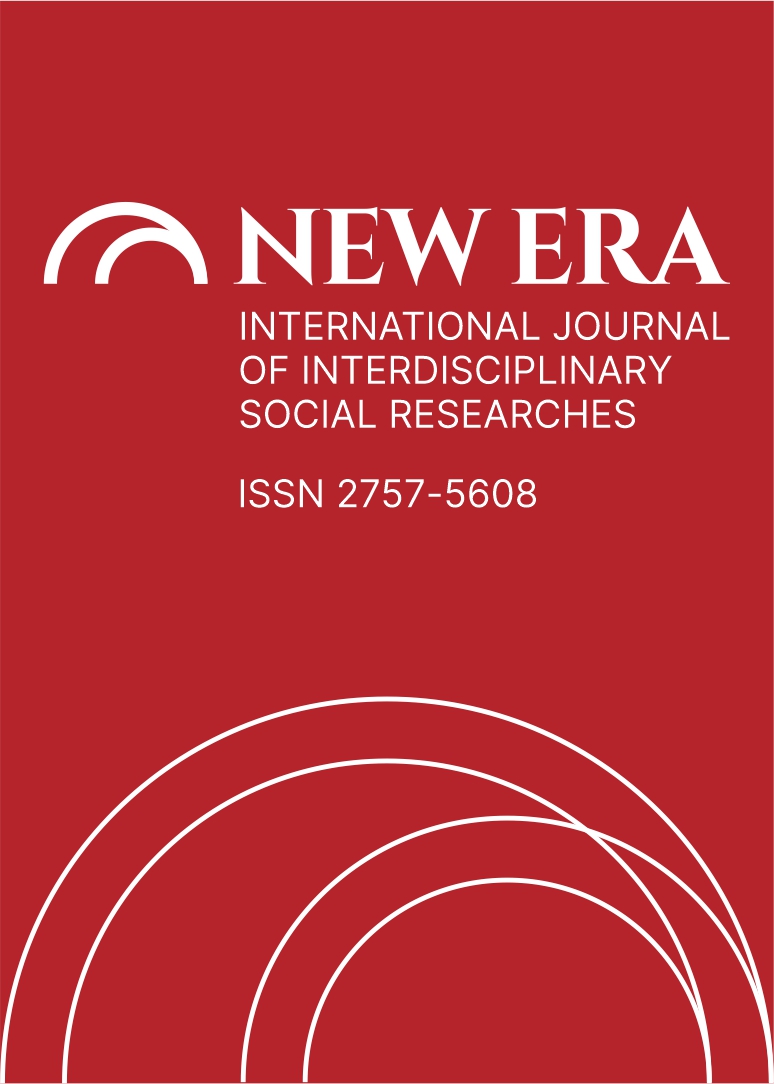EXAMINATION OF CHILDREN’S OBJECT RELATIONSHIPS WITH PROJECTIVE TESTS ACCORDING TO TRAUMA STATUS
DOI:
https://doi.org/10.5281/zenodo.7441910Abstract
It is emphasized widely in the trauma literature that exposure to traumatic events causes significant emotional problems in children. For this reason, in the present study, the purpose was to examine the object relations of children with and without traumas with the Beier Sentence Completion Test, which is a projective test, and the Draw Family Test. The sample of the study consists of 38 children between the ages of 11-14. The data obtained in the study showed that the participants who underwent traumas had higher negative scores in the Beier Sentence Completion Test, and the participants without traumas had higher positive scores in the Beier Sentence Completion Test. In this respect, it can be argued that participants with trauma have higher objects and self-image, and aggression than children without trauma. Similarly, it was also determined that children with trauma used devaluation defense mechanisms, and those without trauma used glorification defense mechanisms. As a result, it is considered that the perceptions and experiences of children with and without traumas are different from each other, and uncovering this difference with projective tests will make an important contribution to the literature.
References
Anzieu, D., & Chabert, C. (2011). Projektif yöntemler. Çev: Bahar Kolbay, Bağlam Yayınları, İstanbul
Athanasiadou-Lewis, C. (2019). A relational perspective on psychological trauma: The ghost of the unspent love. In Psychological Trauma. IntechOpen
Beier, D. C. (1961). Cümle tamamlama testi el kitabı. Ankara: Milli Eğitim Bakanlığı yayınları
Beres, D., & Joseph, E. D. (1970). The concept of psychological representation in psychoanalysis. International Journal of Psycho-Analysis, 51, 1-8.
Blanck, R., & Blanck, G. (1986). Beyond ego psychology: Developpsychological and object relations theory. New York: Columbia University Press
Bluhm, A. M. & Blızard, R. A. (1992). Attachment to the abuser: Intimacy and isolation in incest survivors. Paper presented at the Pennsylvania Psychological Association Convention, Pittsburgh, June.
Buhl, C. (2002). Eating disorders as manifestations of developpsychological disorders: language and the capacity for abstract thinking in psychotherapy of eating disorders. Eur Eat Disord Rev. 2002;10(2):138–145.
Doğan, Y. B. (2015). Kısa acil psikoterapi (BEP). (2nd ed.). Ankara: Kurgu Kültür Merkezi Yayınları
Halewood, A. (2017) Psychodynamic counselling psychology. In: Murphy D, editor. Counselling Psychology: A Textbook for Study and Practice. 1st ed. London: Willey and Sons; pp. 89-103
Herman, J. L., & Van der Kolk, B. A. (1987). Borderline Personality Disorder. Psychological trauma, 111.
Kalsched, D.E. (1996). The Inner World of Trauma: Archetypal Defences of the Personal Spirit. London: Routledge.
Karagöz, Y. (2019). SPSS AMOS META Uygulamalı Nitel-Nicel Karma Bilimsel Araştırma Yöntemleri ve Yayın Etiği, 2. Basım, Ankara: Nobel Yayıncılık.
Kernberg, O.F. (1984). Object-Relations Theory and Clinical Psychoanalysis, Northvale, NJ: Jason Aronson.
Kernberg, O.F. (1985). Internal World and External Reality: Object Relations Theory Applied, Northvale, NJ: Jason Aronson.
Kernberg, O. F. (1986). Severe personality disorders: Psychotherapeutic strategies. New Haven, CT: Yale University Press.
Lieberman, A. F., Chu, A., Van Horn, P., & Harris, W. W. (2011). Trauma in early childhood: empirical evidence and clinical implications. Development and Psychopathology, 23(2), 397–410.
Masterson, J.F. (1976). Psychotherapy of the Borderline Adult: a Developpsychological Approach, New York: Brunner/Mazel
Masterson, J.F. (1981). The Narcissistic and Borderline Disorders: an Integrated Developpsychological Approach, New York: Brunner/Mazel.
Ortigo, K. M., Westen, D., DeFife, J. A., & Bradley, B. (2013). Attachment, social cognition, and posttraumatic stress symptoms in a traumatized, urban population: Evidence for the mediating role of object relations. Journal of Traumatic Stress, 26(3), 361-368.
Pepler, D. J., & Rubin, K. H. (1991). The Development and treatment of childhood aggression. Hillsdale: Lawrence Erlbaum Associates, Inc.
Porot, M., & Duboucher, G. (1952). La Guerıson Des Alcoolıques Par Lantabus. In Presse Medıcale, 7 (60), p.147-147.
Pynoos RS, Frederick C, Nader K ve ark (1987) Life threat and posttraumatic stres in school age children. Arch Gen Psychiatry 44: 1057-1063.
Putnam, F. W. (1989). Diagnosis and treatment of multiple personality disorder. New York: Guilford.
Ringel, S. & Blandell, J. (2012) Trauma: Contemporary Directions in Theory, Practice, and Research. London: Sage
Solomon, H. M. (2004). Self creation and the limitless void of dissociation: the “as if” personality. J Anal Psychol. 49(5):635–656
Szymanski, K., & Springer, C. (2014). Trauma, Aggression and Object Relations in a Child and Adolescent Inpatient Sample. Journal of Child & Adolescent Trauma, 7(3), 193-200.
van der Kolk, B., Pelcovitz, D., Roth, S., Mandel, F., McFarlane, A. & Herman, J. (1996). Dissociation, somatization, and affect dysregulation: The complexity of adaptation to trauma. The American Journal of Psychiatry. 1996;153(7):83-93
Volkan, V. (2007). Object relations in psychotherapy (trans. Ali Algin Köşkdere). Dekupe Promotion Inc. Bursa
Downloads
Published
How to Cite
Issue
Section
License
Copyright (c) 2022 NEW ERA INTERNATIONAL JOURNAL OF INTERDISCIPLINARY SOCIAL RESEARCHES

This work is licensed under a Creative Commons Attribution-NonCommercial 4.0 International License.


